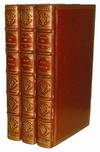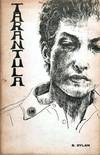![Yu zuan Chun qiu zhi jie 御纂春秋直解 [Direct Explanations to the "Spring and Autumn Annals," Compiled by the Emperor]](https://d3525k1ryd2155.cloudfront.net/h/306/841/1520841306.0.m.jpg)
Yu zuan Chun qiu zhi jie 御纂春秋直解 [Direct Explanations to the "Spring and Autumn Annals," Compiled by the Emperor]
by QIANLONG, Emperor, nominal author
- Used
- Condition
- See description
- Seller
-
New York, New York, United States
Payment Methods Accepted
About This Item
Eight vols. 8vo, later wrappers, orig. block-printed title labels on upper covers, new stitching, heads & tails of spines covered in blue silk (a few worn). [China]: Preface dated 1758.
A commentary, nominally by the Qianlong emperor (1711-99, reigned 1735-96), of the Spring and Autumn Annals, one of the Confucian classics. The commentary rejects a previously current interpretation of the Annals in favor of a reading favorable to the Manchu monarchy.
The Spring and Autumn Annals is a very terse and apparently entirely documentary account of events involving the state of Lu in Chinese antiquity. It covers the period 722-481 BCE. The importance of the text in the Chinese intellectual tradition stems from its association with Confucius, who was from Lu (in present-day Shandong) and was said to have written the chronicle. Several commentaries were written to the chronicle or associated with it, and later scholars produced their own editions that used these commentaries selectively. One such version was authored by Hu Anguo (1074-1138 CE). Written in the Song period, when China was in a losing conflict with Inner Asian states on its northern border, Hu's commentary stressed the irreconcilability between Chinese civilization and the "barbarians" surrounding it. The two had been kept separate in the period covered by the Annals, according to Hu, but they had since "mingled to the detriment of both" (Elman, Classicism, Politics, and Kinship, 153). The Song empire eventually lost its northern half to the Jurchen, one of the neighboring non-Chinese peoples. The remaining southern rump-state fell to the Mongols in 1279.
The Qing empire of the Qianlong emperor was ruled by Manchus. They were descendants of the Jurchen, and their empire relied to a large extent on collaboration with the Mongols. Yet the Qing empire also presented itself as a Confucian polity. As one of the Confucian classics, the Annals remained a highly charged text, as was Hu Anguo's commentary to it. The mid-Qing emperors sought to strengthen the court's prerogative to interpret the classics, and by the 1770s, 19 imperial editions of the various classics had been produced at court (Huang, "Shilun Siku tiao dui Qing qianqi guanfang jingxue de jiedu yu pipan," 1).
The discourse surrounding China and its neighbors was sensitive in the period, and it evolved over time, as the Qing state sought supremacy in Inner Asia. That goal appeared close to being attained toward the end of the 1750s, when the Direct Explanations to the "Spring and Autumn Annals," Compiled by the Emperor, was published. In the book, the Qianlong emperor - ostensibly to get closer to the original text by removing later, erroneous layers of commentary - departed from Hu Anguo's interpretation to introduce his own, or one produced in collaboration with his officials. Not only did Qianlong reject Hu Anguo's xenophobic discourse, he also replaced Hu's Neo-Confucian identification of "Heaven" (tian), as a universal "principle" (li) underlying all things, with a reading in which "Heaven" was coterminous, rather, with the "king" (wang) (Qin "Qianlong shiqi kekao feichu Hu Anguo Chunqiu zhuan yuanyin zaixi," 300). A reflection of the confidence of the Qing empire at the height of its power, this reading elevated the monarchy and made its actions more difficult to criticize.
The imperial preface is printed in the calligraphy of Yu Minzhong 于敏中 (1714-79), a highly placed Chinese civil official. Several pages carry a seal on which the first three characters are Longmen xian 龍門縣, the name of a county in the metropolitan district that surrounded Beijing in the Qing period (we have been unable to read the remaining characters). A reader has added punctuation in black ink.
A fine set, preserved in a hantao. A few natural paper flaws to the text.
References
Elman, Benjamin A. Classicism, Politics, and Kinship: The Ch'ang-chou School of New Text Confucianism in Late Imperial China. Berkeley: University of California Press, 1990.
Huang Aiping 黃愛平. "Shilun Siku tiao dui Qing qianqi guanfang jingxue de jiedu yu pipan" 試論四庫提要對清前期官方經學的解讀與評判. Lishi wenxian yanjiu 2017, no. 2.
Qin Xingguo 秦行國. "Qianlong shiqi kekao feichu Hu Anguo Chunqiu zhuan yuanyin zaixi" 乾隆時期科考廢除胡安國《春秋傳》原因再析. Yuandao 2021, no. 2.
A commentary, nominally by the Qianlong emperor (1711-99, reigned 1735-96), of the Spring and Autumn Annals, one of the Confucian classics. The commentary rejects a previously current interpretation of the Annals in favor of a reading favorable to the Manchu monarchy.
The Spring and Autumn Annals is a very terse and apparently entirely documentary account of events involving the state of Lu in Chinese antiquity. It covers the period 722-481 BCE. The importance of the text in the Chinese intellectual tradition stems from its association with Confucius, who was from Lu (in present-day Shandong) and was said to have written the chronicle. Several commentaries were written to the chronicle or associated with it, and later scholars produced their own editions that used these commentaries selectively. One such version was authored by Hu Anguo (1074-1138 CE). Written in the Song period, when China was in a losing conflict with Inner Asian states on its northern border, Hu's commentary stressed the irreconcilability between Chinese civilization and the "barbarians" surrounding it. The two had been kept separate in the period covered by the Annals, according to Hu, but they had since "mingled to the detriment of both" (Elman, Classicism, Politics, and Kinship, 153). The Song empire eventually lost its northern half to the Jurchen, one of the neighboring non-Chinese peoples. The remaining southern rump-state fell to the Mongols in 1279.
The Qing empire of the Qianlong emperor was ruled by Manchus. They were descendants of the Jurchen, and their empire relied to a large extent on collaboration with the Mongols. Yet the Qing empire also presented itself as a Confucian polity. As one of the Confucian classics, the Annals remained a highly charged text, as was Hu Anguo's commentary to it. The mid-Qing emperors sought to strengthen the court's prerogative to interpret the classics, and by the 1770s, 19 imperial editions of the various classics had been produced at court (Huang, "Shilun Siku tiao dui Qing qianqi guanfang jingxue de jiedu yu pipan," 1).
The discourse surrounding China and its neighbors was sensitive in the period, and it evolved over time, as the Qing state sought supremacy in Inner Asia. That goal appeared close to being attained toward the end of the 1750s, when the Direct Explanations to the "Spring and Autumn Annals," Compiled by the Emperor, was published. In the book, the Qianlong emperor - ostensibly to get closer to the original text by removing later, erroneous layers of commentary - departed from Hu Anguo's interpretation to introduce his own, or one produced in collaboration with his officials. Not only did Qianlong reject Hu Anguo's xenophobic discourse, he also replaced Hu's Neo-Confucian identification of "Heaven" (tian), as a universal "principle" (li) underlying all things, with a reading in which "Heaven" was coterminous, rather, with the "king" (wang) (Qin "Qianlong shiqi kekao feichu Hu Anguo Chunqiu zhuan yuanyin zaixi," 300). A reflection of the confidence of the Qing empire at the height of its power, this reading elevated the monarchy and made its actions more difficult to criticize.
The imperial preface is printed in the calligraphy of Yu Minzhong 于敏中 (1714-79), a highly placed Chinese civil official. Several pages carry a seal on which the first three characters are Longmen xian 龍門縣, the name of a county in the metropolitan district that surrounded Beijing in the Qing period (we have been unable to read the remaining characters). A reader has added punctuation in black ink.
A fine set, preserved in a hantao. A few natural paper flaws to the text.
References
Elman, Benjamin A. Classicism, Politics, and Kinship: The Ch'ang-chou School of New Text Confucianism in Late Imperial China. Berkeley: University of California Press, 1990.
Huang Aiping 黃愛平. "Shilun Siku tiao dui Qing qianqi guanfang jingxue de jiedu yu pipan" 試論四庫提要對清前期官方經學的解讀與評判. Lishi wenxian yanjiu 2017, no. 2.
Qin Xingguo 秦行國. "Qianlong shiqi kekao feichu Hu Anguo Chunqiu zhuan yuanyin zaixi" 乾隆時期科考廢除胡安國《春秋傳》原因再析. Yuandao 2021, no. 2.
Reviews
(Log in or Create an Account first!)
Details
- Seller
- Jonathan A. Hill, Bookseller, Inc.
(US)
- Seller's Inventory #
- 8811
- Title
- Yu zuan Chun qiu zhi jie 御纂春秋直解 [Direct Explanations to the "Spring and Autumn Annals," Compiled by the Emperor]
- Author
- QIANLONG, Emperor, nominal author
- Book Condition
- Used
- Quantity Available
- 1
- Keywords
- China, Chinese, history, philosophy
Terms of Sale
Jonathan A. Hill, Bookseller, Inc.
5 day return guarantee, with full refund including shipping costs for up to 5 days after delivery if an item arrives misdescribed or damaged.
About the Seller
Jonathan A. Hill, Bookseller, Inc.
Biblio member since 2009
New York, New York
About Jonathan A. Hill, Bookseller, Inc.
By appointment
Glossary
Some terminology that may be used in this description includes:
- Wrappers
- The paper covering on the outside of a paperback. Also see the entry for pictorial wraps, color illustrated coverings for...
- New
- A new book is a book previously not circulated to a buyer. Although a new book is typically free of any faults or defects, "new"...
- Fine
- A book in fine condition exhibits no flaws. A fine condition book closely approaches As New condition, but may lack the...

